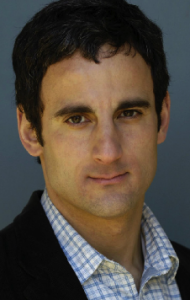In a recent edition of Storyboard’s Annotation Tuesday!, GQ’s Amy Wallace talked about the crossover between narrative and profile writing. “While I get that the two (genres) are distinct, I actually don’t think of them as being that different,” she told Storyboard. “Not to get too groovy, but it’s all about story and the drivers that keep that story going. A profile is not just a list of chronological events in an individual’s life. A profile seeks to capture the essence – the point – of the person being profiled, and that is done, often, through narrative.” With that in mind, we give you the Profile finalists in this year’s City and Regional Magazine Awards*:
 “Deconstructing Bob Cassilly,” by Jeannette Cooperman, St. Louis magazine, about an eccentric museum-maker. Listen to her careful use of humor:
“Deconstructing Bob Cassilly,” by Jeannette Cooperman, St. Louis magazine, about an eccentric museum-maker. Listen to her careful use of humor:
Mike DeFilippo, City Museum’s photographer in residence (literally—he lives in the lofts) points out that “when everybody else was watching TV, playing golf, or surfing the Internet, Bob was thinking and creating and building. He didn’t waste time in committee meetings. He got shit done.”
Employees fought to keep up. “He’d walk in with his jaw set: ‘What’s everybody do-ing? Everybody in this building is goofing off!’” Diehl says. His temper could make him erratic: He’d hire a guy who’d held the door for him, but at the slightest hint of disloyalty turn on a longtime staffer. “‘Tell him he’s fired,’ he’d say, without even blinking,” Diehl recalls. “He fired his brother.”
Bob was a tyrant, a Svengali, a mentor. “He was like a drug,” Knickmeyer says. “You just couldn’t get enough of being around him.” City Museum director Rick Erwin has never taken the elevator, because Bob never did; he tucks in his shirt, because Bob always did. He tried so hard to please Bob that Bob rebuked him for it. “He told me that was my downfall: I was trying to think like him and second-guessing myself,” Erwin says wryly. “He said, ‘Do it the way you’d do it. I like some of the stuff you do.’”
–Bob certainly never second-guessed himself. “I remember telling him about someone who didn’t like us, and he said, ‘Why do you care?’” Erwin says. “He always did what he wanted to do”—except when he got coerced into a media interview. After a session with a New York Times reporter, he told then–deputy director Jean Larson Steck, “I think I did good! I think I did good!” She said, “Bob, your polo shirt is on inside out.”
 “Schoolly D is Living the American Dream,” by Jason Fagone, Philadelphia magazine, about the original gangster rapper. Listen to Fagone’s terrific voice:
“Schoolly D is Living the American Dream,” by Jason Fagone, Philadelphia magazine, about the original gangster rapper. Listen to Fagone’s terrific voice:
Do you know Schoolly? No? Well, have you heard of Jay-Z? Kanye West? Ice-T or Ice Cube? Any rapper at all, really? You probably wouldn’t have, if not for Schoolly D. Exactly 30 years ago, Schoolly, whose real name is Jesse Bonds Weaver Jr., wrote the world’s first gangster-rap anthem, a tune he called “Gangster Boogie.” He did it right here in Philly. Many people are under the impression that gangster rap is originally a Los Angeles phenomenon, or a New York one. But it was Schoolly, the Philadelphian, who became the first rapper to make bitches and hos, drugs and guns, his exclusive lyrical territory. He was the first to channel the lives of hustlers, gangsters and pimps—people who sold dope and sold sex and broke the law because there were no other options for economic advancement in their neighborhoods—into a new kind of street poetry. He was the first to fashion a motif of the word “nigga.” (Once, he rapped about walking into a bar and seeing a sucker-ass nigga tryin’ to sound like me. Put my pistol up against his head. I said, Sucker-ass nigga, I should shoot you dead.) He was also one of the first to slow down the cadence of rap from a fast babble, a faucet of words, to a drip, so that you could hear every word with beautiful, terrible clarity. Like Langston Hughes before him, Schoolly was a black man writing a letter to America about a particular slice of the black experience.
Anyways, as soon as Schoolly and I walked into this particular bar, Schoolly spotted a young blond woman near the door. She was tall, with wavy hair. He walked toward her. Schoolly is sprightly and muscular and has a smooth, unlined face. Wikipedia says he’s 45. He looks 30. He’s actually 49. On this night, he wore a light gray Kangol cap with skinny black jeans and black leather Steve Madden boots. He put his hands on the blonde’s hips and twirled her around 360 degrees. Then he spun off of her like a tailback and lurched into the darkened main room of the bar, where he bear-hugged another, different blonde, who happened to be a former top 100 finisher on American Idol. Her name is Erika Schiff. Schiff is lithe and plump-lipped and trying to launch a music career. I followed in Schoolly’s wake with a pen and notepad, awkwardly interviewing the women he had engaged, asking the first blonde how she knew Schoolly (“Schoolly?” she said, confused. “No, I don’t know him at all”) and getting a quote from the second blonde, from Schiff, the Idol girl. “Schoolly’s not just the gangster,” Schiff said. “He has these other sides. He’s sweet.” Then I sat down at a table in the corner next to a heavyset guy with bulging eyes, and I watched Schoolly and the Idol girl start to dance. I took a sip of beer and looked up, and he was kissing her. Not amorously. Not exactly. Just a peck on the lips. Then another peck. She was laughing and throwing her hair back.
 “Jeanne Assam is Still Waiting,” by Robert Sanchez, 5280 magazine, about a Colorado woman who, while trying to turn her life around, killed a rampaging gunman. Watch how Sanchez builds tension:
“Jeanne Assam is Still Waiting,” by Robert Sanchez, 5280 magazine, about a Colorado woman who, while trying to turn her life around, killed a rampaging gunman. Watch how Sanchez builds tension:
Matthew Murray, a thin, 24-year-old man, is wearing blue earplugs, a flak jacket, kneepads, black lace-up boots, and a backpack as he walks up the corridor. He’s holding a Bushmaster AR-style rifle. Murray also has two .9 millimeter handguns, and he’s carrying at least 1,000 rounds of ammunition. He fires his weapon down the hallway, again and again. He is the plague who’s come to wipe out those who have sinned against him.
From Assam’s hiding place, the rifle shots are deafening. She can hear the man mumbling between rounds. He fires again. Assam is calm and alert. She wants to shoot the gunman when he passes, but it seems too risky. There’s nowhere to run if he sees her first. God, please be with me, she thinks. Assam steps from behind the wall, gun stretched from her body. Murray is 20 yards away. “Police officer!” she yells. “Drop your weapon!”
The man jerks his rifle toward Assam. She fires five quick shots. Murray falls backward. Assam moves to the middle of the corridor and rushes forward. She’s a few dozen feet from Murray now, exposed in the middle of the hallway. “Drop your weapon, or I will kill you!” she yells. Murray sits up to face her. He’s still holding the rifle. Boom-boom-boom. Bullets rip past her and pepper a wall. While Murray shoots, Assam fires three times.
 “Portrait of the Artist As a Postman,” by Jason Sheeler, Texas Monthly, about a reclusive artist who became the only American to design scarves for Hermès. Watch how Sheeler, in his second section, sets up a quest narrative:
“Portrait of the Artist As a Postman,” by Jason Sheeler, Texas Monthly, about a reclusive artist who became the only American to design scarves for Hermès. Watch how Sheeler, in his second section, sets up a quest narrative:
On a stormy morning this past April, I went to the rougher part of East Waco in search of Kermit Oliver. In the nine months since I’d first heard his name, I’d learned some more about him. Throughout the seventies, he had been an accomplished though somewhat eccentric painter in Houston, significant enough to have warranted a 2005 retrospective from the Museum of Fine Arts there. Still, very little was written about him—a couple of stories in the Houston papers, a brief 1989 profile in People, and that was about it. I called Kermit’s gallery, Hooks-Epstein, and talked to the owner, Geri Hooks, who gave me Kermit’s phone number (after getting his permission) but warned that he was not going to be easy to contact. She also told me that it was Lawrence Marcus (brother of Stanley Marcus, longtime president of Neiman Marcus) who had orchestrated the partnership between Kermit and Hermès, so I called up Lawrence’s wife, Shelby, who is the aunt of a friend of mine. She confirmed that he would be difficult to get to know (“Very few people can say they are close to Kermit Oliver”) and advised me to let him do the talking. After several calls to Kermit and his wife, Katie, they finally agreed to see me.
I drove south from Dallas under an overcast sky and made my way through Waco to Clifton Street. As I rolled slowly down the potholed road toward his turn-of-the-century white prairie house, two women walking barefoot and drinking beers in the middle of the street tried to wave me off. “Those people are crazy,” one of them said, gesturing toward the house. “They only come out at night.” Few in the neighborhood knew who lived in that white house behind the imposing red-brick wall, and even fewer knew about the art that was created inside. A customer at Jasper’s Barbecue, just down the street, said all he knew was that the house was always lit up at night.
“The Passion of John Wojnowski,” by Ariel Sabar, Washingtonian magazine, about a sex-abuse activist who has protested outside the Vatican embassy nearly every day for 14 years. Watch how Sabar establishes time as a theme:
Time weighs on John Wojnowski. It wears him down. It winds him up.
Time, for Wojnowski, is not just the half century since the priest in the mountains of Italy touched him. It is also the lost days since then, the wasted months and years when he is sure he let everyone down: his parents, his wife, his children, himself.
Markers of time are there, too, in the ragged datebooks that cleave to his body like paper armor. While riding the bus late one night, after another of his vigils outside the Vatican’s United States embassy, he showed them to me: The 2010 datebook inhabits the right pocket of his frayed chinos, 2011 the left; the 2012 book, its pages bound by rubber bands, stiffens the pocket of his shirt.
He has come to this corner and stood with his signs for some 5,000 days. In his datebooks, he records—a word or two, just enough to jog memory—the sights and sounds that keep one day from bleeding into the next.
The Apostolic Nunciature, as the Vatican’s embassy is officially known, sits across the street from the tumbling red digits of the US Naval Observatory’s Master Clock, which displays official US time. There’s a strange symmetry between that clock, its seconds yoked to the oscillation of cesium atoms, and Wojnowski, whose own circuitry can at times seem as unblinking and relentless.
*In case you missed it, we recently brought you excerpts of the City and Regional Magazine Awards finalist stories in Reporting and Feature. Winners will be announced in May, at the CRMA conference in Atlanta. Big congratulations, too, to the CRMA Writer of the Year finalists: Pamela Colloff and Mimi Swartz, of Texas Monthly; Tony Rehagen, of Atlanta magazine; Robert Sanchez of 5280 and Steve Volk, of Philadelphia magazine. Last year’s Writer of the Year winner was Justin Heckert, who took Storyboard inside his winning stories here.



